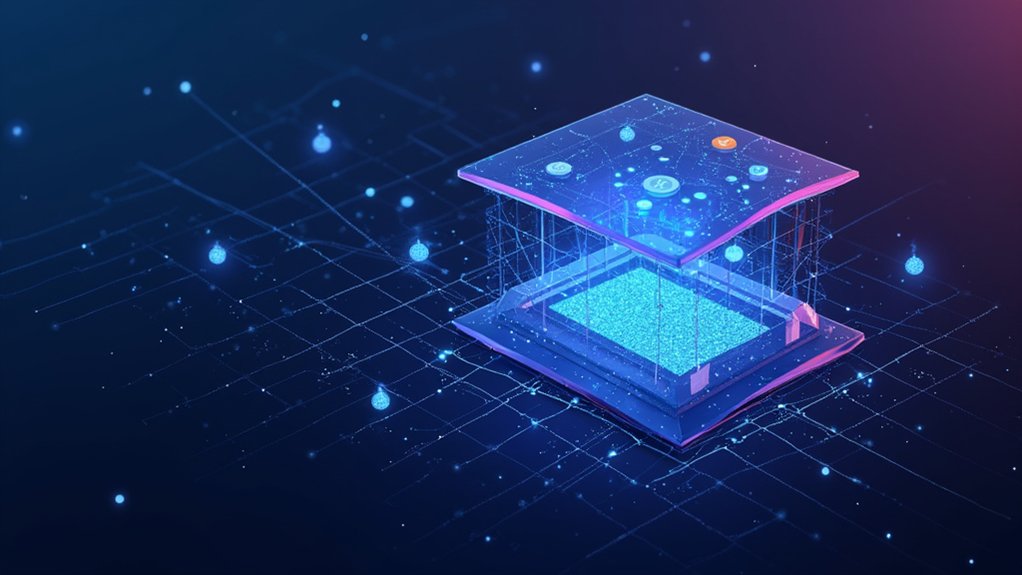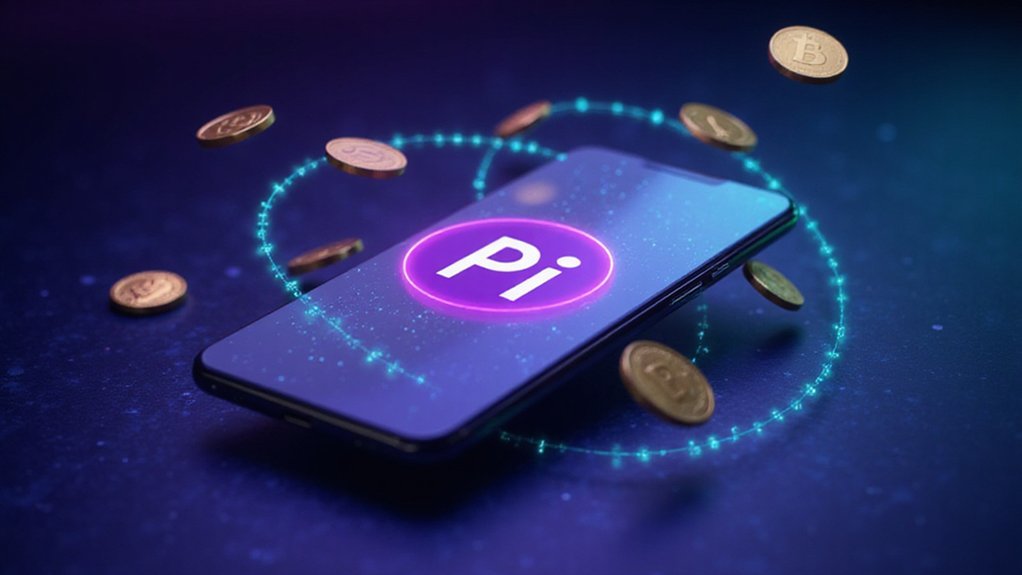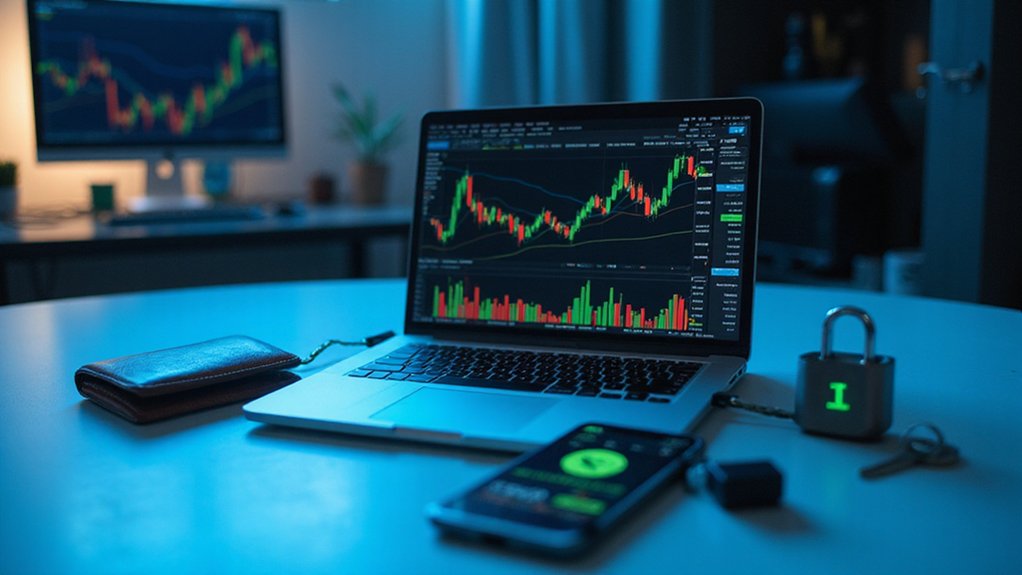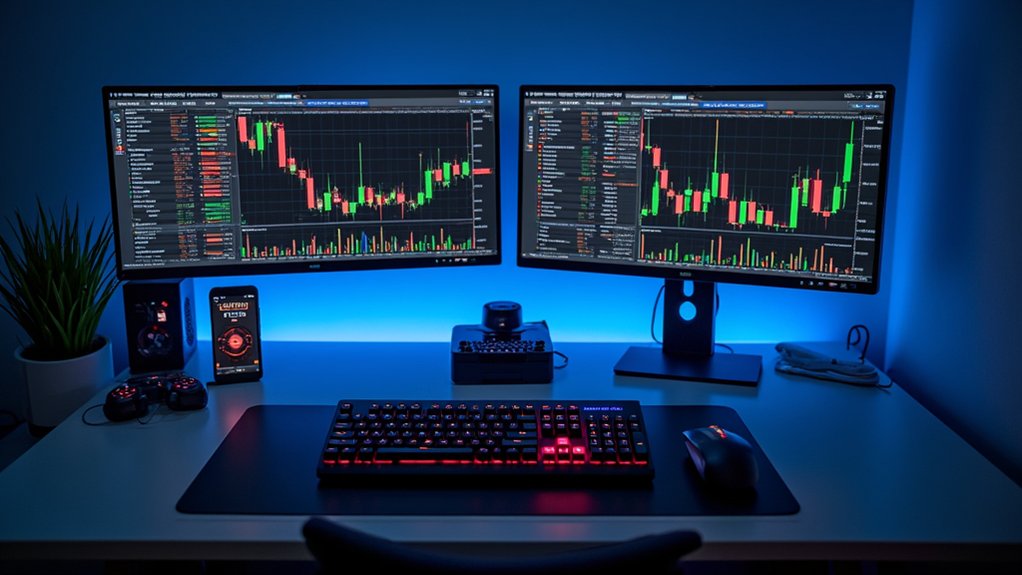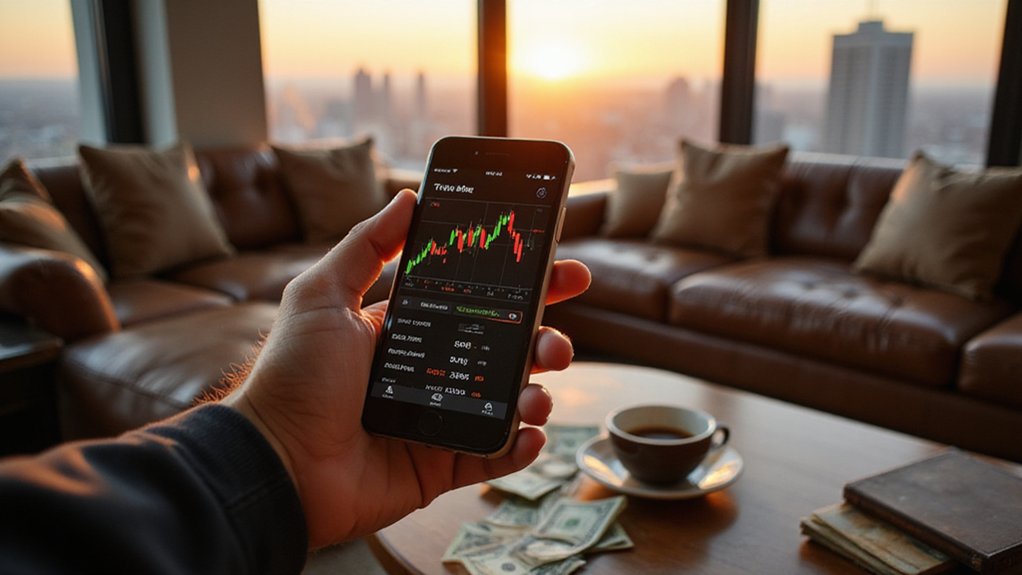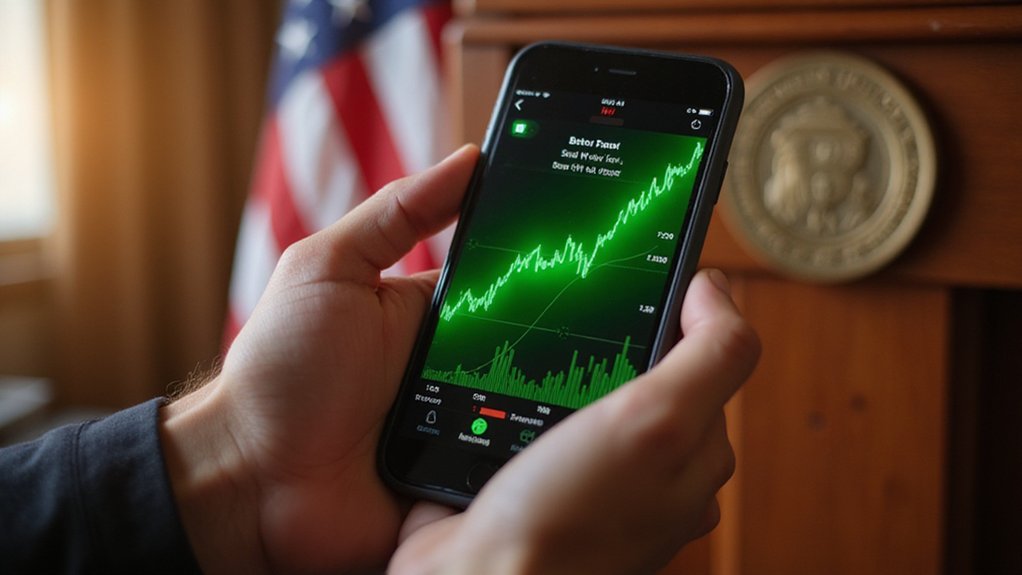A DAO (Decentralized Autonomous Organization) operates as a blockchain-based entity governed collectively by token holders rather than traditional leadership hierarchies. These digital collectives function through transparent smart contracts that automatically execute decisions after member voting. DAOs employ token-weighted governance systems where participation rights correspond to holdings, enabling everything from decentralized investment vehicles to global collaboration platforms. Despite challenges including token concentration and smart contract vulnerabilities, they offer corruption resistance and middleman-free resource coordination. The financial world’s curious experiment in code-as-law continues to evolve.

A Decentralized Autonomous Organization (DAO) represents perhaps the most ambitious reimagining of organizational structure since the limited liability corporation upended business formations in the 19th century.
Operating without centralized leadership, these blockchain-based entities function through transparent, open-source smart contracts that encode rules and execute decisions automatically.
Members—typically token holders—collectively own, manage, and govern the organization through a bottom-up approach that would make traditional corporate hierarchies shudder.
The technological architecture underpinning DAOs is nothing short of revolutionary.
Built on blockchain’s immutable ledger system, DAOs execute operations through smart contracts that enforce predetermined rules without human intervention (a prospect both thrilling and unnerving to management theorists).
This code-is-law approach establishes trust through transparency rather than authority, creating organizations that are simultaneously autonomous and beholden to their community.
Participation in these digital collectives typically requires ownership of governance tokens, which confer voting rights proportional to holdings.
Token holders propose initiatives, cast votes, and collectively determine the organization’s trajectory—democracy distilled to its algorithmic essence.
The treasury, often substantial in successful DAOs, remains inaccessible without community consensus, thereby mitigating the risk of unilateral financial malfeasance that periodically plagues traditional corporations.
DAOs have found fertile ground in decentralized finance, collective investment vehicles, and community-driven projects where traditional organizational structures prove inadequate.
Their borderless nature allows for unprecedented global collaboration, though this same characteristic creates complex legal questions that jurisdictions worldwide are still grappling to address.
All activities and votes within a DAO are recorded on blockchain to ensure complete visibility and accountability to the community.
Similar to yield farming in DeFi, many DAOs incentivize participation through liquidity mining programs that reward active contributors with additional governance tokens.
A significant challenge facing many DAOs is the tendency toward token concentration among few holders, which can undermine the democratic principles these organizations aspire to uphold.
Security remains the Achilles’ heel of these organizations.
Smart contract vulnerabilities can—and have—resulted in catastrophic treasury drains that no insurance policy covers.
Yet proponents argue that such risks are outweighed by DAOs’ resistance to corruption, their permissionless access, and their capacity to coordinate resources at scale without middlemen.
For better or worse, these digital cooperatives may represent the inevitable evolution of collective organization in an increasingly tokenized world.
Frequently Asked Questions
What Legal Status Do DAOS Currently Have in Different Countries?
DAOs’ legal status remains a regulatory patchwork globally.
Wyoming has pioneered legislation allowing DAOs to register as LLCs, while Malta was first to legalize them (albeit with stringent requirements).
The EU lacks specific DAO frameworks despite its MiCA regulations, and Switzerland permits DAOs to operate under existing structures without entity status.
Meanwhile, crypto-friendly jurisdictions like Estonia, Gibraltar, and the Cayman Islands offer varying degrees of operational flexibility—though most nations still grapple with this square-peg-in-round-hole regulatory conundrum.
How Can DAOS Protect Against Malicious Governance Attacks?
DAOs can fortify themselves against governance attacks through a multi-layered defense strategy: implementing proposal thresholds and voting power caps (basic hygiene, really), requiring deposits to deter frivolous submissions, and deploying decentralized notification systems to circumvent alert manipulation.
The shrewd DAO deploys multisig wallets while fostering a vigilant community—because even the most elegant smart contract can’t substitute for human oversight when malicious actors inevitably attempt to game the system.
What Skills Are Most Valuable for Working With DAOS?
Working effectively within DAOs demands a diverse skill portfolio where technical aptitude meets collaborative finesse.
Most valuable are blockchain fundamentals, governance understanding, and smart contract development for those on the technical side (no surprise there).
However, equally critical—yet often undervalued—are soft skills like adaptability, effective communication, and autonomous problem-solving.
Treasury management expertise and community engagement capabilities round out the package, as DAOs ultimately succeed through their human capital as much as their technological infrastructure.
How Do Insurance Mechanisms Work for DAO Treasury Funds?
Insurance mechanisms for DAO treasury funds employ multi-layered protection strategies combining traditional and crypto-native approaches.
DAOs typically utilize smart contract coverage (protecting against technical vulnerabilities), treasury diversification insurance (hedging against volatility), and governance risk policies.
Decentralized insurance protocols like Nexus Mutual offer specialized DAO coverage, while some organizations implement self-insurance through dedicated reserve pools.
The nascent field struggles with appropriate pricing models—risk assessment for novel governance structures remains, predictably, an actuary’s nightmare.
Can Traditional Businesses Transition Into Becoming DAOS?
Traditional businesses can indeed shift into DAOs, albeit with significant restructuring.
The metamorphosis entails adopting blockchain infrastructure, reengineering governance from hierarchical to collective stakeholder models, and tackling murky regulatory waters.
Hybrid approaches—where companies retain conventional legal structures while incorporating decentralized elements—currently dominate this landscape.
The shift’s viability hinges on regulatory evolution, technical expertise acquisition, and cultural readiness for distributed decision-making (a tall order for establishments accustomed to corner-office proclamations).
